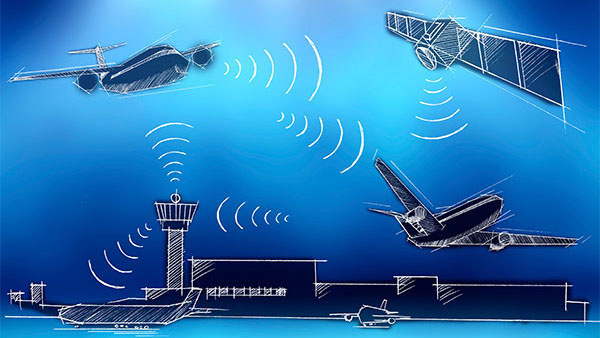ALTERNATIVE NAVIGATION TECHNOLOGIES IN CASE OF SHORT-TERM GNSS OUTAGE
Aircraft rely on global navigation satellite systems (GNSS) to navigate and adhere to performance-based navigation (PBN) procedures including required navigation performance 1 (RNP 1). European legislation requires all large terminal manoeuvring areas to implement RNP1 standard instrument departures and arrivals (SIDs and STARs) by 2024. In case of degradation or absence of satellite signals, aircraft revert to ground-based distance measuring equipment (DME) navigation aids in the short term to triangulate their position between ground stations.
This solution supports development of updated minimum operational standards (MOPS) for terrestrial navigational aids and minimum aviation system performance standards (MASPS) to meet this alternative position, navigation and timing (A-PNT) reversion procedure to enable aircraft to fly RNP 1 routes. SESAR research found DME equipment meets reliability, integrity and continuity requirements but performance also needs to be formalised in this context in order to provide a backup for RNP 1 operations. The solution provides an acceptable means of compliance for the RNP 1 reversion based on DME/DME in all terminal manoeuvring area environments where modern DMEs are deployed. Research results are being used by EUROCAE WG 107 to update existing requirements to define new standards due delivery by end-2020. The updates include minimum integrity level specification; range accuracy requirements; and service continuity requirements. In addition, a methodology for the integrity demonstration is being defined, such that the integrity levels achieved by different OEMs can be compared and validated.
SESAR carried out an economic assessment for different terminal manoeuvring areas which showed positive results. While aircraft systems are not impacted by the short-term A-PNT solution, air navigation service providers may have to replace old DME systems to meet the new standards.
Although currently the implementation of RNP 1 is foreseen only to enable SIDs/STARs, the opportunity and capability to support RNP1 reversion based on DME/DME beyond the terminal area could be investigated. SESAR is also researching a number of existing and new technologies capable of supporting more demanding operational positioning and navigation requirements to meet medium and long term GNSS outages.
The solution is available for industrialisation and has been implemented in Lithuania and Poland.
BENEFITS
- Enhanced safety
- Improved resilience
- Worldwide interoperability
DATAPACKS

